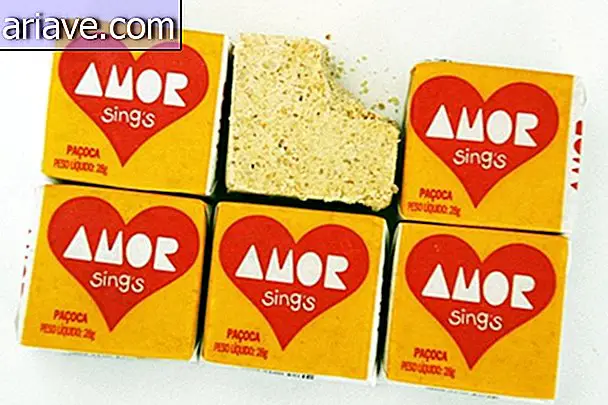Did you know that bananas are naturally radioactive?
That's right you read: bananas are naturally radioactive! But before you abolish this option from your menu, it is worth understanding how this fruit's radioactivity works and knowing that it does not pose any health risks.
First, we all know that bananas are excellent sources of potassium, which is an important chemical element for plant growth and the functioning of the human body. Lack of potassium in the body can result in muscle weakness, cramps, breathing difficulties and various other symptoms. And it is precisely from potassium that comes potassium-40, a natural isotope of the element that, in turn, is radioactive.
Secondly, it is important for you to know that a dose of 100 rems (unit of measurement indicating the amount of radiation) is required for the body to begin to experience the ill effects of radiation. So, considering that if a person eats one banana a day for a year, he can add up to 3.6 million, he will need to eat about 10 million bananas to be able to expose himself to considerable radiation.
A special unit

However, even if the amount of radiation present in a banana is minimal, it does not mean that it should be ignored. For this reason, a unit of measurement was created which, in English, is called the “banana equivalent dose” (BED) and corresponds to the amount of radiation a person is exposed to when eating a banana.
Even though it is a little used unit, it allows us to better understand how exposure to radioactivity works. One of its applications is to control the amount of radiation that can be released by a nuclear reactor, for example. Because this number is often extremely small, experts use picocurie, which is one millionth of a millionth of a curie, a unit named after the Polish scientist.
Since units like curie and picocurie don't make much sense to most people, the “banana equivalent dose” has been implemented. This allows us to understand whether a certain amount of radioactivity is harmful or not, since we know that bananas do no harm. Basically, the unit allows us to see if the amount of radiation released by a nuclear accident or a cell phone, for example, is really as dangerous as the media usually announces.
The effects on the body

As you can see, you will need to eat tons of bananas so that your body can be effectively hit by radiation. And yet, it is worth remembering that recent research is beginning to point out that these tiny amounts of radiation we receive daily from space, bananas, electronics, and many other sources can be beneficial.
It is still worth remembering that radiation is present in places where we do not even imagine. Among the most common foods, potatoes, sunflower seeds, beans and some nuts are also considered naturally radioactive. Here it is worth mentioning Brazil nuts, which are even more radioactive than bananas, recording about 6, 600 picocuries or 1.85 BED per kilo. In this case, the property comes from radio isotopes, which are highly radioactive, and are present in the soil where the chestnut trees grow.
Another proof that small amounts of radiation are often unsafe is X-ray examination. A chest X-ray exposes a person to 8 millirems; if it is the head and neck, it is about 20 millirems, but if it is a spinal exam, the exposure number is about 130 millirems.

If you have to do an absurd number of exams or like bananas a lot, the first symptoms of radiation will appear when you reach the level of 100 rems. A person with this exposure rate shows flu-like signs, also increasing susceptibility to infections, leukemia, and lymphomas.
When exposure reaches 200 rems, the person begins to have gastrointestinal problems, which can cause nausea and abdominal pain, and the presence of blood in the vomit and stool. At this point, rapidly multiplying structures - such as blood cells, reproductive cells and hair cells - begin to change and permanent hair loss may occur.
With an exposure of 300 rems, the immune system is subject to permanent damage. Upon reaching 400 rems, there is a 50% chance of death within 60 days if the person is not treated immediately.











